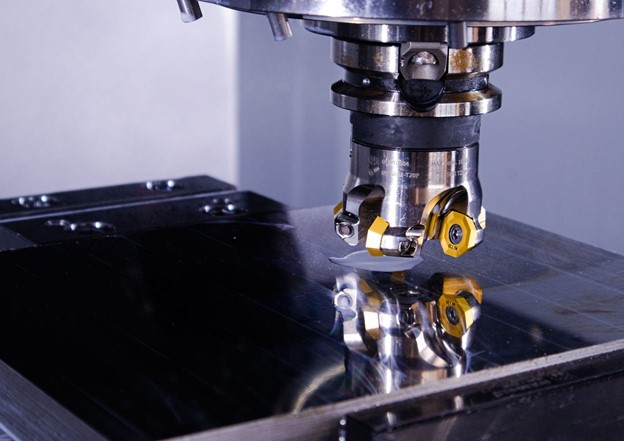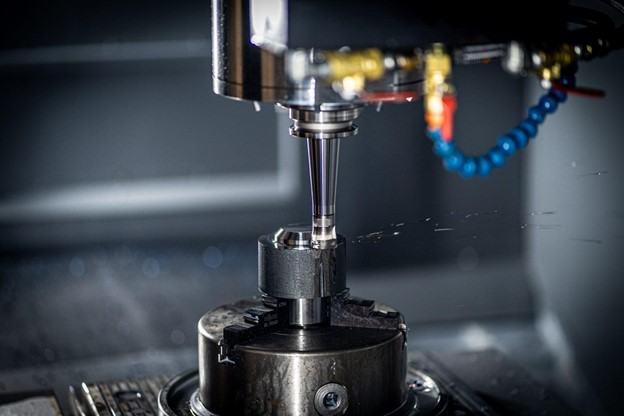CNC machining is the best way to create a prototype or go to large-scale production. However, high production expenses are often the reason why people stop. There are multiple factors that drive the CNC machining cost, including the materials, design, quantity, finishes, and turnaround time.
Luckily, your design decisions can help you reduce the cost significantly. By following the 9 tips provided in this article, you can manufacture CNC parts that are optimized to comply with the design requirements but minimize expenses.

Integrate Internal Radius
Integrating an internal radius can save you significant machining costs and time. CNC tools have a cylindrical shape so, developing a part with an internal radius instead of blunt corners can simplify production. Make sure that the radius you add is of at least one-third of the cavity’s depth. Here, the general rule of thumb is that the larger, the better. Moreover, to avoid changing tools, utilize the same radius for all edges. Finally, use a smaller or no radius on the floor of the cavity.
Limit the Depth of the Cavity
Machining deep cavities of CNC parts is wasteful and time-consuming because many materials will need to be removed. Moreover, the cutting length of CNC tools is limited and usually works best when the cavities cut have a depth of up to three times their diameter. So, to minimize the expenditures, you should limit the depths of the cavities shouldn’t be greater than four times their length.
Avoid Thin Walls
Machining thin walls accurately can be challenging and considerably increase the machining time and expenses. On the other hand, machining a thick wall is more stable to machine and, as a result, a more cost-effective option. Consider designing walls of 0.8mm or thicker for metal parts and above 1.5mm for plastic parts.
Avoid Deep Threads
Keeping the thread depths low can also help you cut down expenses. Unless it’s vital to the part, you should avoid integrating threads whose depths are above three times the hole’s diameter. Deeper threads demand using special tools and that can drive the price tag up.
Avoid High Tolerances
Not every part of CNC machining requires the highest tolerances. Quite the contrary, you should use high tolerances just when it’s required because it increases machining time and, consequently, cost. If the tolerance isn’t specified, the parts will be machined using the standard tolerance, which is around 0.125mm and is acceptable for most features.
Use Standard Hole Sizes
When using standard drill bits, holes can be machined fast and accurately. On the other hand, you’ll need an extra step in machining non-standard holes, which would increase the expenditure. So, use standard hole sizes whenever possible and limit their depth to four times their diameter.
Minimize the Number of Machine Setups
Designing parts that can be machined in as few — ideally, one — setups can help you save on expenses. To achieve this, design parts with a 2.5D geometric model as these can be manufactured in one CNC machine setup. Alternatively, separate the parts into multiple geometric models.
Reconsider the Use of Text
First, think about whether it’s crucial to integrate text into the part. Embossing or engraving letters demands precision and extra machining stages, which would increase the machining time and expenditure. If your product does need lettering, consider using a more cost-effective method such as adding text on the part’s surface using painting or silk screening. Finally, if integrating text directly onto the part is required, choose engraved lettering and use sans-serif fonts.
Avoid Multiple Surface Finishes
Surface finishes enhance the appearance of CNC parts and make them more resistant to harsh environments. However, it also requires several extra steps and drives the price up. So, to minimize expenditures, choose the “as machined” surface finish and only request multiple finishes when absolutely necessary.

Final Words
In general, complexity is what drives the expense up in CNC machining. So, as a rule of thumb, you should keep the design simple and think twice before determining that some feature is necessary; something seemingly harmless might add more cost than anticipated. By following these nine design tips for CNC machining, you can significantly reduce production expenditures.
